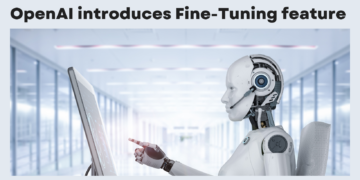Nvidia, a leading player in the tech industry, introduced the Blackwell B200 Artificial Intelligence (AI) chip. Unveiled by Nvidia CEO Jensen Huang at a prestigious event in San Jose, California, the B200 chip promises speeds up to 30 times faster than its predecessor, more capable than existing AI chips. With an 80% market share, Nvidia aims to strengthen its dominance in the field of AI technology.
Nvidia’s Latest AI Chip: The Blackwell B200
At the heart of Nvidia’s announcement is the Blackwell B200 chip, which represents a significant leap forward in AI processing capabilities. Jensen Huang, in his keynote address, highlighted the chip’s remarkable performance enhancements, positioning it as a game-changer in the industry. The unveiling of the B200 chip marks another milestone in Nvidia’s journey towards advancing AI technology.
Beyond AI Chips
In addition to the Blackwell B200 chip, Nvidia also introduced a suite of new software tools aimed at enhancing system efficiency. These tools, called microservices, streamline the integration of AI models into various business operations, making it easier for companies to leverage AI capabilities.
Nvidia’s vision extends beyond AI chips, venturing into automotive and robotics. Their new chips for cars, capable of running chatbots, highlight their commitment to innovation. Despite competition from AMD and Intel, optimism prevails due to the burgeoning AI market, positioning Nvidia to thrive in the evolving tech landscape.
But Nvidia is not the only player in the AI chip production. Some of the top players include AMD, Google, Intel, and Graphcore. Top of Form
| AI Chip | Focus | Capabilities | Target Users | Current Status |
| Nvidia Blackwell (GB200) | High-performance training & inference (large models) | 208 billion transistors, 30x faster than previous Nvidia chips (claimed) | Data centers, research institutions, large tech companies | Announced March 2024, expected release later in 2024 |
| Google TPU v4 | Efficient training of massive AI models (internal use) | Custom architecture for TensorFlow, high power efficiency | Primarily Google AI, limited external availability | In use by Google, limited external availability |
| Intel Spring Hill | Versatile AI chip for training & inference (various applications) | Integrated AI acceleration techniques, balanced performance | Data centers, cloud providers, diverse AI developers | Announced in 2023, release details emerging |
| Graphcore IPU | Complex AI models (graph-based applications) | Poplar architecture for graph neural networks | Researchers, companies using complex graph-based AI | Available for purchase and cloud deployment |
| Google LaMDA Chip | Accelerating large language models (LLMs) | Custom architecture for LLMs (natural language tasks) | Primarily Google’s internal LLM development | Under development, details on release scarce |
| AMD Instinct MI300X | Generative AI tasks (large datasets) | Large on-chip memory for massive datasets | Data centers, high-performance AI applications | Available |


























